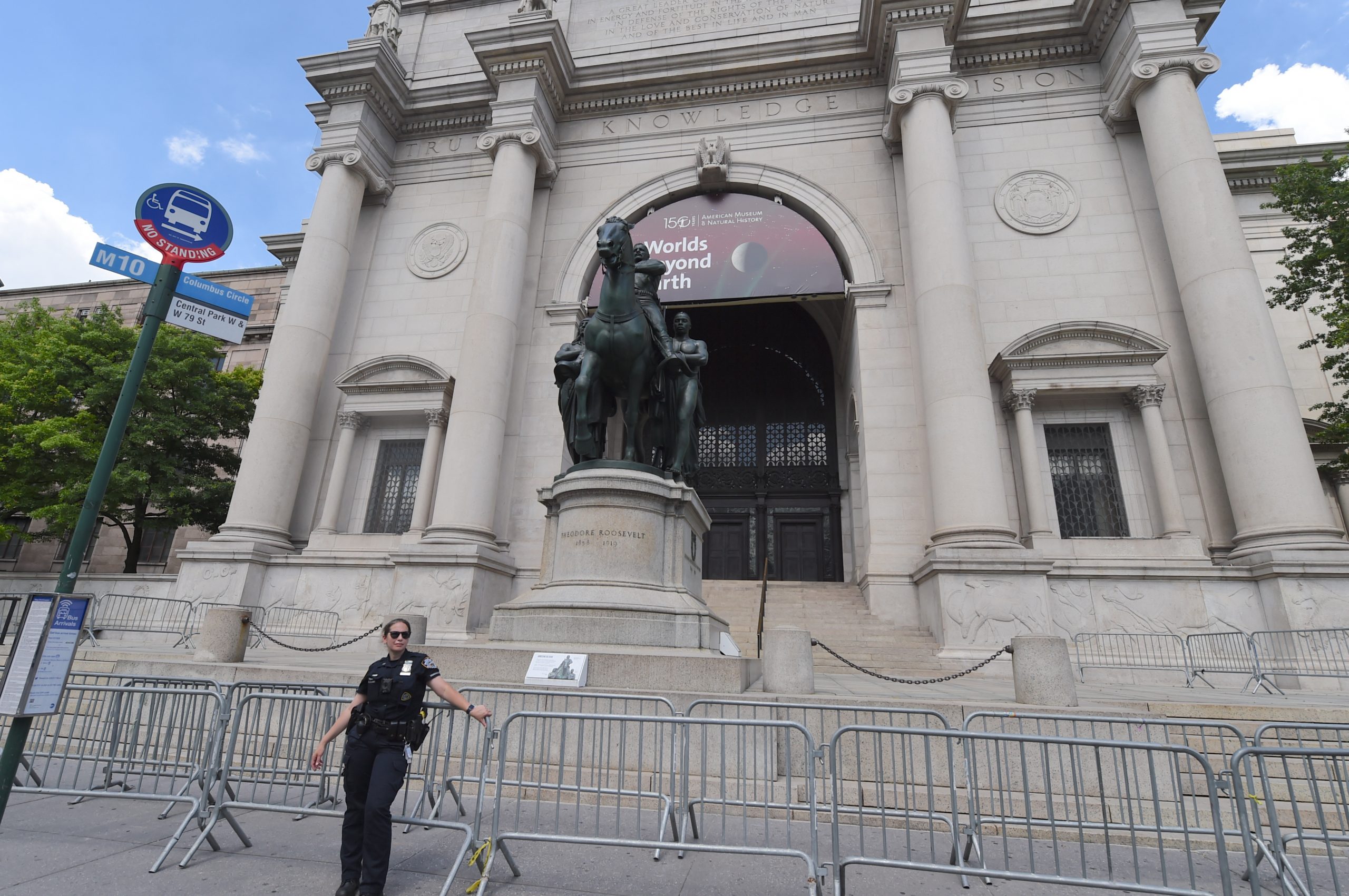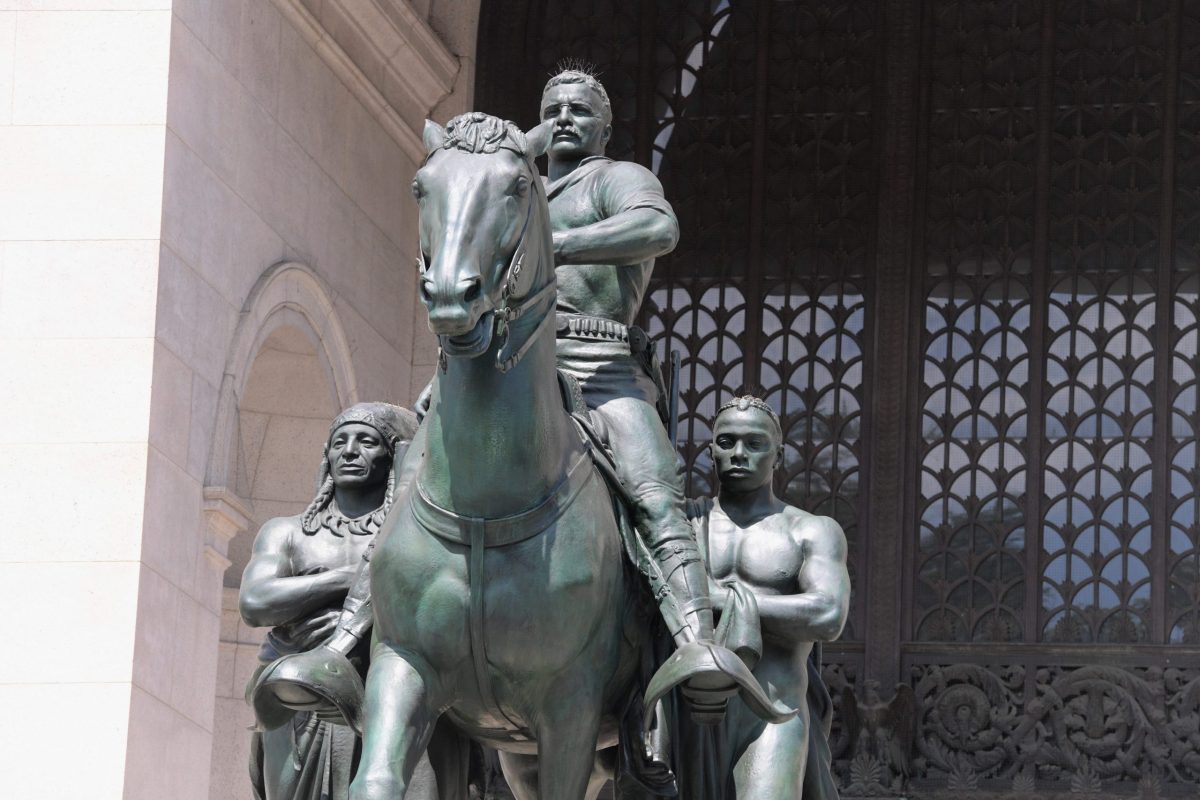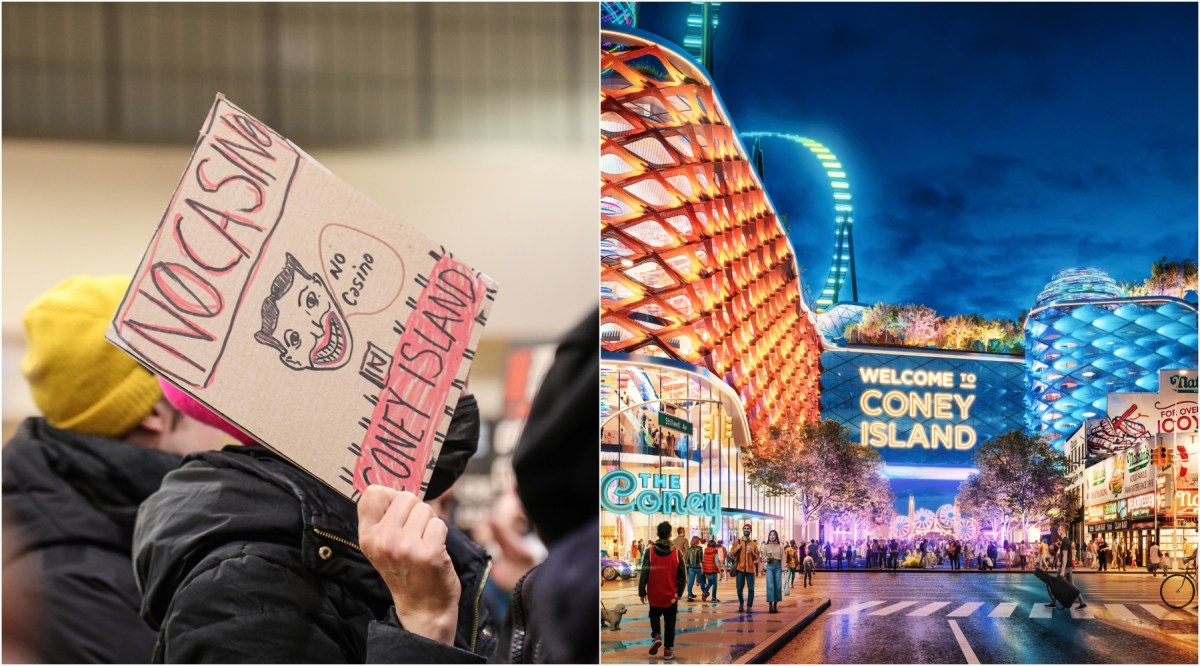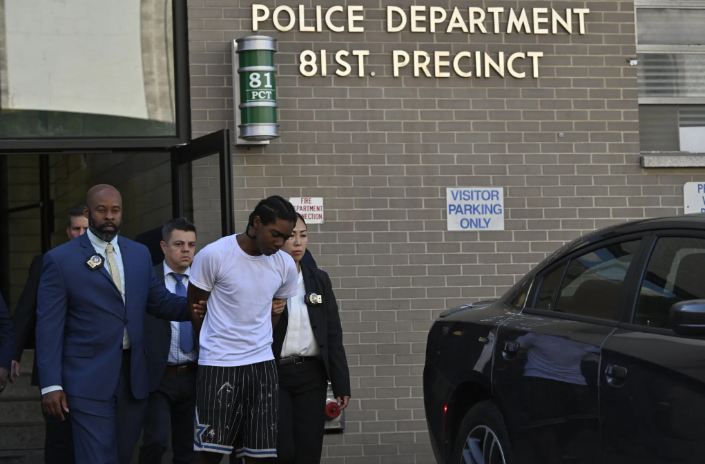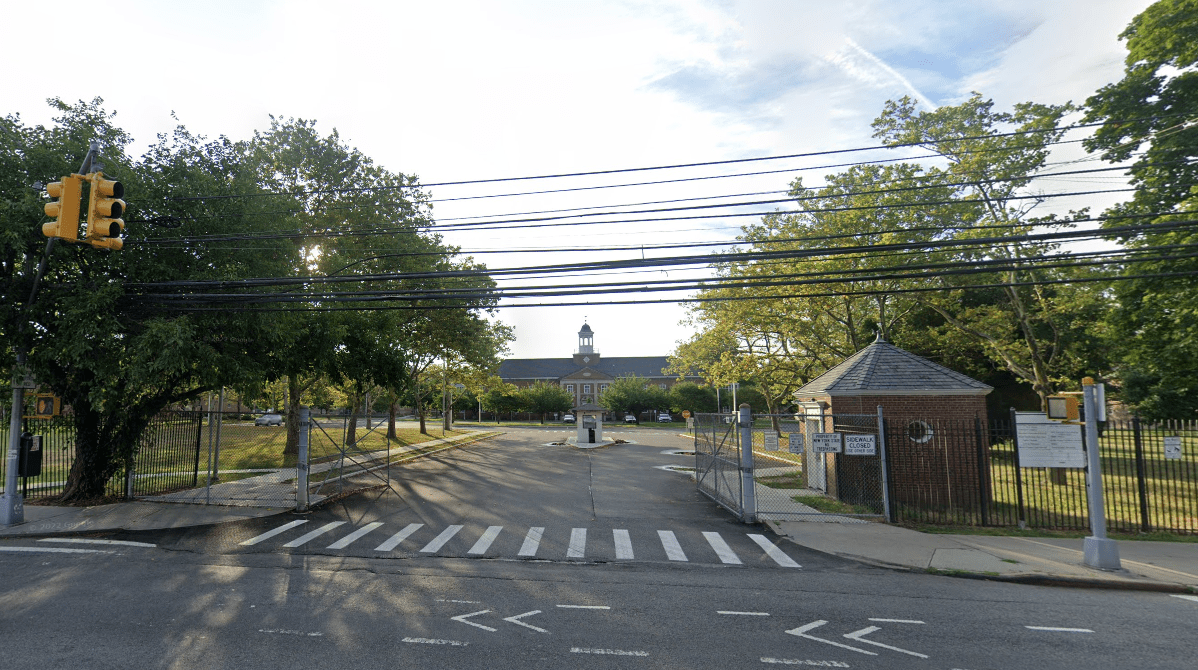For 80 years, the likeness of former President Theodore Roosevelt on horseback, flanked by Native American and African figures, has greeted visitors to the American Museum of Natural History (AMNH) on the Upper West Side.
But the statue has been a subject of controversy in recent years, as it depicts what the museum describes as a “hierarchal composition that places one figure on horseback, and the others walking alongside.” Some have interpreted this composition as inherently racist.
While it sits right outside the museum, the Theodore Roosevelt monument belongs to the city, not the AMNH. City government commissioned the statue in 1925 and unveiled 15 years later, on city property, as part of a larger tribute to the nation’s 26th president, former New York governor, former New York City police commissioner, hero of the Spanish-American War and a staunch conservationist.
Even so, the museum believes the time has come for the controversial statue to go. On Sunday, it formally asked New York City to have the Theodore Roosevelt monument removed.
The call comes at a moment in history, in the wake of the George Floyd protests, where Americans are demanding the removal of public statues deemed racist or in tribute to abhorrent figures in history, such as confederate war generals.
Removing the statue is not about extracting Roosevelt’s legacy, the museum insisted. The AMNH houses New York State’s official memorial to Roosevelt, and the Roosevelt family has a long-time association with the institution; Theodore Roosevelt IV, the former president’s great-grandson, serves as a museum trustee. The Museum’s Hall of Biodiversity will be renamed in the 26th president’s honor.
“We recognize that more work is needed to better understand not only the statue, but our own history,” the museum said in a statement Sunday. “As we strive to advance our institution’s, our city’s and our country’s passionate quest for racial justice, we believe that removing the statue will be a symbol of progress and of our commitment to build and sustain an inclusive and equitable museum.”
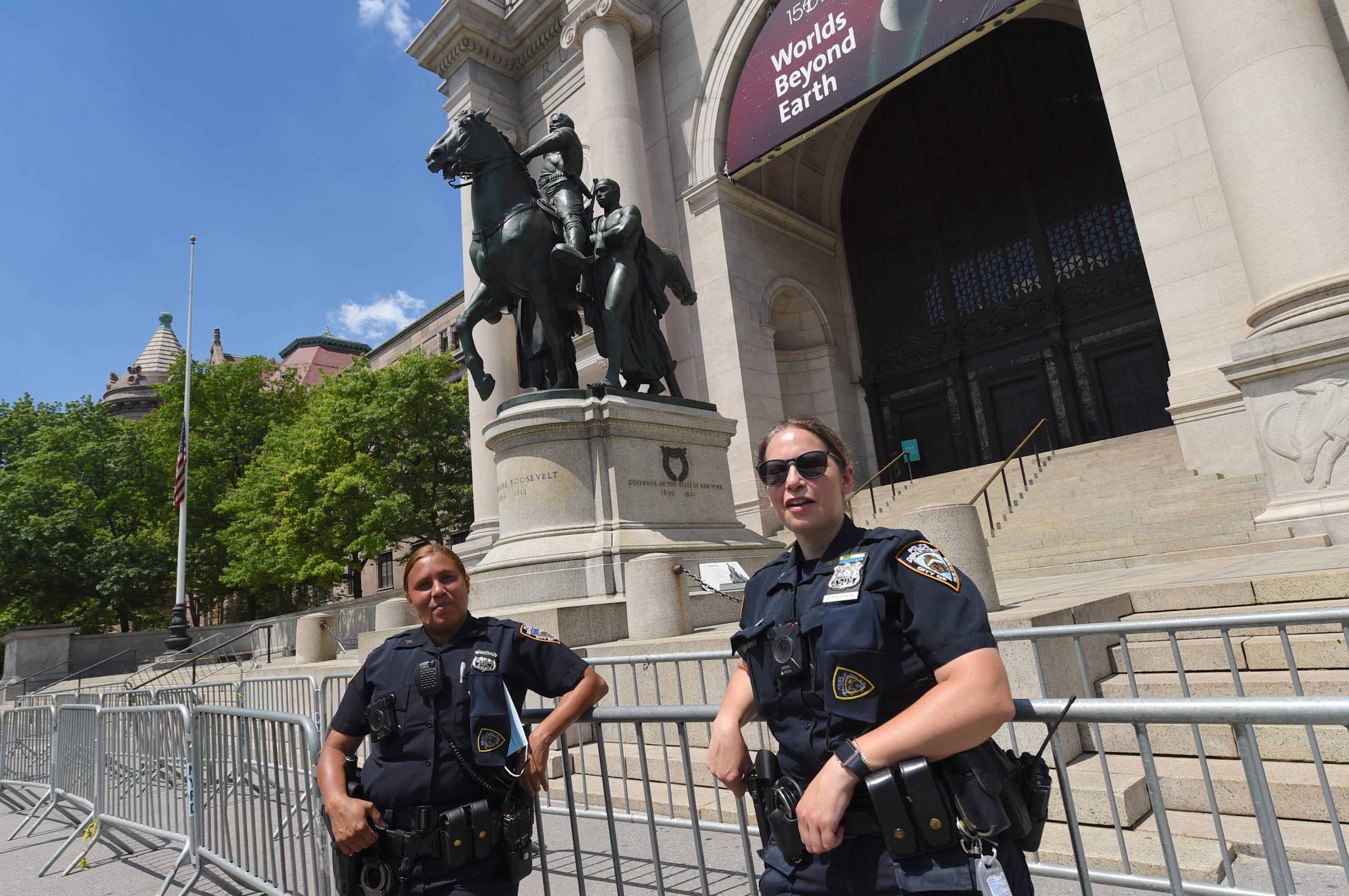
This isn’t the first time the Roosevelt statue’s removal was considered. Between 2017 and 2018, the Mayoral Advisory Commission on City Art, Monuments and Markers mulled removing the monument, but ultimately failed to reach a consensus on whether to do so. The city instead directed the AMNH to provide “additional interpretation and context” to the statue.
That led to the formation of the “Addressing the Statue” exhibit at the AMNH, which explains its history and “contemporary reactions” to it.
“We are proud of that work, which helped advance our and the public’s understanding of the statue and its history and promoted dialogue about important issues of race and cultural representation,” the AMNH statement noted, “but in the current moment, it is abundantly clear that this approach is not sufficient.”
There were no immediate details as to how soon the statue might come down.
During his Monday morning press conference, Mayor Bill de Blasio told a reporter that his office would consider the AMNH request, while also acknowledging that the issue with the memorial is “a separate question between [Roosevelt] and the actual statue.” The mayor says the monument, in its current form, “has representations that clearly do not represent today’s values.”
“The statue clearly, you know, presents a white man as superior to people of color. And that’s just not acceptable in this day and age, never should have been acceptable,” de Blasio said. “So, I know that the museum feels it’s best to take it down, I support that decision. I think you know, they felt that’s what was right for them as a museum. And I understand why they’re doing it and I respect it.”
Residents of the Upper West Side had mixed reactions to the decision to take the statue down.
Joseph Bolanos, president of the 76th Street Block Association said taking the statue down was “terrible.”
“It’s terrible when you start eliminating history and eliminating statues – there was a time when things were different, and things are different now, but we have to remember how we got here,” Bolanos said. “I think Stalin did the same thing – he removed statues to eliminate the history around World War II. I understand the sensitivity of people – but I think that this particular statue if you eliminate it, may be remove both sides of the statue, you can still keep Teddy Roosevelt, you can modify it. Of course there are some who might have something against Teddy and that’s one thing. It looks not great – people don’t even notice it – people walk by and go into the museum.”
Bolanos said the statue is still part of the culture and that history is “terrible in many ways,” but he added, “instead of erasing history, this reminds you of the bad things that happened, and it is a certain legacy that you can think about. If you eliminate it sone kids will never know the history. You bring them to the museum and they ask questions about why is there a native American why is there an African Amercian – if they aren’t there, the question is never asked.”
Jennifer Mitchell, a resident of the neighborhood, said, “it’s awful – where does it end?”
“It’s a great piece of art and a beautiful sculpture – and people are offended by anything now,” Mitchell noted. “Some rightfully so and some not so much. But I think they designated Columbus a landmark so they can’t take that one down. Next they will want to take down Lincoln.”
Brian Woody brought his two young children, Jack and Dean to see the statue. He said he has mixed emotions.
“I understand it’s a beautiful statue, but I also understand the political climate – its Roosevelt on his horse, flanked by two minorities. It’s a tragic part of our history with native Americans and slavery – it is post emancipation – our history,” Woody said.

